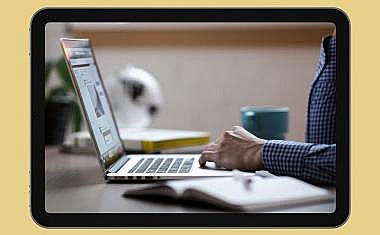
Literary Success: Authorpreneurs Need A Business Plan
Authorpreneurs aim to build a sustainable career. A business plan is a roadmap for your ventures. While there’s no one-size-fits-all template, these eight key components will help you set clear goals and manage your resources.
As an authorpreneur, you’re both a creative and a small business owner. As such, you need a strategic roadmap for your venture. In short, you need a business plan. A well-defined business plan helps you balance artistic goals with financial sustainability. It provides direction and helps you navigate the challenges of publishing while growing your author brand.
Recommended article

The Authorpreneur: Balancing Artistry and Business
For a subset of authors, their books serve as the foundation for building a business. I call these individuals authorpreneurs.
What is a business plan?
A business plan outlines your goals, strategies, and the steps needed to achieve them. A business plan offers organization and control, benefiting not only large corporations but authors as well. Here’s why:
- Strategic planning: A business plan helps you map out the next three to five years. It establishes clear, quantifiable goals, including the number of books and related products/services, target audience growth, and revenue projections.
- Financial & resource management: Sustainable operations rely on careful budgeting for production, marketing, and all other expenses. A long-term plan helps you use time, money, and energy wisely, avoiding wasted resources.
- Market insight & audience targeting: Market trend and competition analysis provide valuable insight into your audience’s needs, and allow you to tailor your projects for maximum impact.
- Decision-making and risk assessment: Your business plan serves as a guide for evaluating opportunities and challenges. It helps identify risks early and develop strategies to overcome them.
- Collaboration & partnerships: A solid plan makes it easier to attract editors, designers, marketing experts, and other collaborators who can help grow your brand.
Recommended article

Author Platform: Engage With Your Audience
Through emails, social media, or face-to-face communication during events, it’s easier than ever before to interact with your audience.
The components of a business plan
Keep it short; otherwise, people won’t read it. It takes more effort, but it might be worth having a long version for you and a shorter, simpler one for others. While business plans vary, you should include these eight key components:
1 Executive Summary
This section covers the key points of the business plan, including the literary vision, objectives, target group, planned product releases, and financial forecasts. Though it’s the first section, write it last. Keep it brief (ideally under two pages) while ensuring clarity and impact.
2 Business Description
Detail your brand, especially your unique value and market position. Beyond books, list additional revenue streams like courses, editing services, or merchandise. If applicable, outline plans for scaling, strategic partnerships, or an exit strategy.
3 Market and Competition
Analyze industry trends, opportunities, and challenges. Identify competitor gaps and explain how you will address market needs more effectively. Define your target audience and their preferences.
4 Marketing and Sales
Describe your marketing strategy and how you’ll engage readers. Outline sales channels, including retailers, bookstores, self-publishing platforms, and direct-to-consumer sales.
5 Company Organization
Define your business structure, including roles and decision-making processes. If you work with freelancers or partners, highlight their contributions and expertise.
6 Milestone Plan
Create a roadmap with clear goals, deadlines, and resource allocation. A well-structured plan ensures accountability and efficient time and financial management.
7 Opportunities and Risks
Conduct a SWOT analysis to assess strengths, weaknesses, opportunities, and threats. Address internal factors like skills and external ones, like market trends. Include contingency plans for potential risks.
8 Financial Planning
Outline projected income, expenses, and profitability. Include sales forecasts, production costs, marketing budgets, and operational expenses to ensure financial clarity:
- Sales forecasts estimate revenue from book sales, factoring in projected demand and pricing strategies. Production costs include expenses for writing, editing, formatting, printing, and additional services like cover design or illustration.
- Marketing expenses cover promotional efforts to boost visibility and sales, such as advertising, website development, social media, and book fair participation.
- Financial projections typically span five years. For the first three, detailed monthly estimates help track cash flow and performance. For the final two, quarterly projections provide insights into long-term trends and growth potential.
Takeaways
A well-crafted business plan sets you up for long-term success. It keeps you focused, adaptable, and ready to turn your creative passion into a thriving business. Regularly review and update your plan to adjust your progress and any strategic changes.

Sign up for the "Essentials for Authorpreneurs"
Are you ready to unlock your potential as an authorpreneur? Then sign up for Sascha K. Alexander's newsletter “Essentials for Authorpreneurs”, and get “Branding for Beginners: An Authorpreneur's Primer On Creating A Compelling Brand” for free.














